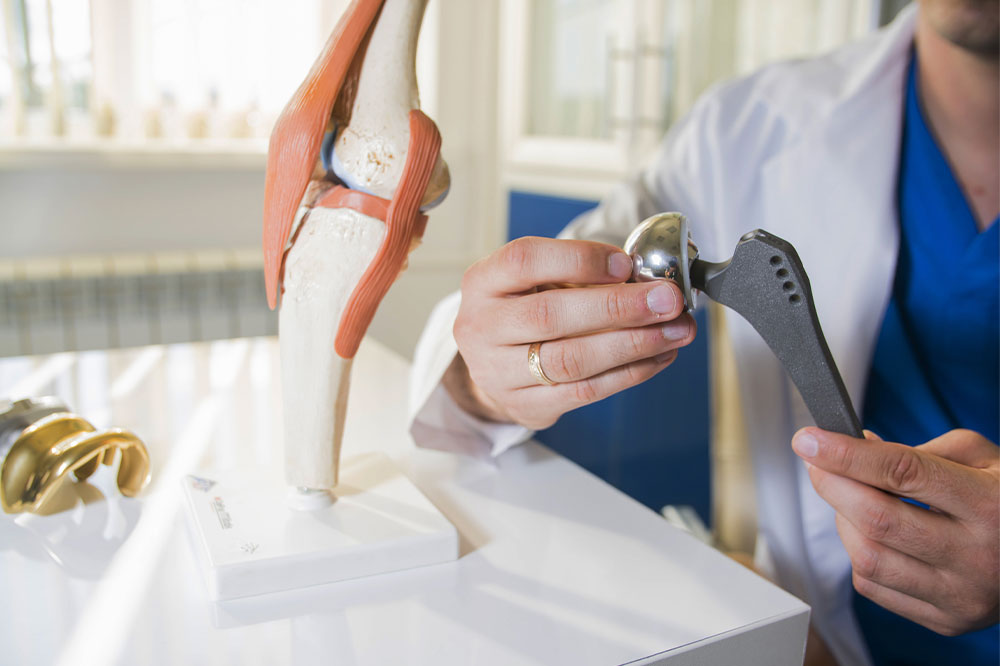
Hip replacement surgery – What it is, its risks, and tips for recovery
The surgeon removes and replaces the damaged hip joint with an artificial implant during hip replacement surgery. This prosthesis is made of plastic, ceramic, or metal. The goal of this surgery is to improve mobility and decrease pain. This operation might be the best option when hip pain interferes with everyday activities and non-surgical treatment methods cease to help. This article discusses everything about hip replacement surgery.
Hip replacement surgery – What it is
Hip replacement surgery, also called hip arthroplasty, offers reliable and excellent outcomes and is highly successful. The functioning of the replaced prosthetic hip is similar to the natural one, and the quality of life and mobility significantly improve. The objectives of this surgery are to help improve mobility and make the individual move better, improve the functioning of the hip joints, and help relieve the pain from the diseased or damaged hip joint.
Types of hip replacement surgery
There are primarily three types of hip replacement surgery, which are detailed as follows:
- Total hip replacement: It is the most common type of hip replacement surgery. The hip’s damaged parts are all replaced with artificial implants during this operation.
- Partial hip replacement: It is also referred to as hemiarthroplasty. Only one side of the hip joint is replaced. This procedure is most commonly done for older people who get hip fractures.
- Hip resurfacing: In this surgery, the head of the thigh bone is not removed but capped with a metal covering.
Why the surgery is done
This surgery is performed to treat various bone conditions that cause pain and mobility problems, such as the ones mentioned below:
- Osteoarthritis: It is age-related and is commonly referred to as wear-and-tear arthritis. It usually happens to people over fifty or with a family history.
- Rheumatoid arthritis: It is an autoimmune disease and an inflammatory condition.
- Childhood hip disease: Sometimes, children and infants get hip problems and should be immediately treated when symptoms appear. If these are left untreated, they may later lead to arthritis.
- Post-traumatic arthritis: It results from a severe fracture or hip injury. There may be damage to the cartilage, which causes stiffness and hip pain over time.
- Osteonecrosis: The fracture or dislocation and certain other injuries may lead to a lack of blood supply to the femoral head. Due to this, the bone’s surface collapses, resulting in arthritis.
Hip replacement surgery techniques
On diagnosis of damage to the hip, hip replacement surgery is performed. It is the only option when the hip pain persists despite other treatments. Various approaches to hip replacement surgery are mentioned below:
- Posterior approach: This is the most common approach opted to replace the hip. An incision is made on the back of the hips, near the buttocks.
- Lateral approach: This is also similar to the posterior approach. However, the only difference is that the incision on the back of the hips is not near the buttocks but closer to the body front.
- Direct anterior approach: This is called a muscle-sparing hip replacement or mini anterior approach. The front of the hip is incised for this.
Potential risks
When non-surgical treatment options do not work, there is a need for hip replacement surgery. Depending on the patient’s health condition, this operation may pose certain risks, such as blood clots, nerve injury, bleeding, infection of the replaced joint, joint stiffness, hip dislocation, and a difference in leg length.
Sometimes, there is also the possibility of the hip implant loosening. However, only four percent of people who undergo hip replacement surgery experience complications. Also, it has been observed that the most common difficulty is joint stiffness.
Tips for recovery
After the surgery, following the healthcare provider’s instructions is essential. Patients must walk cautiously, be more secure on their feet, and use crutches, canes, or walkers while walking. Also, they must not indulge in certain activities until they are allowed by the healthcare provider. Patients must also follow all the instructions on showering and wound care. Finally, they must reach out to their healthcare provider in case of any infection or other signs that need immediate attention, such as fever, blood clots, or redness at the incision site.
Hip replacement surgery is a major operation, and undergoing one is the biggest decision. The full recovery period may vary among individuals; however, most people perform well three months post-surgery. There is a need to weigh all the potential risks and always be ready with the questions to be asked of the healthcare provider. This post aims to provide information on hip replacement surgery. Following the healthcare provider’s advice and instructions is always recommended.




